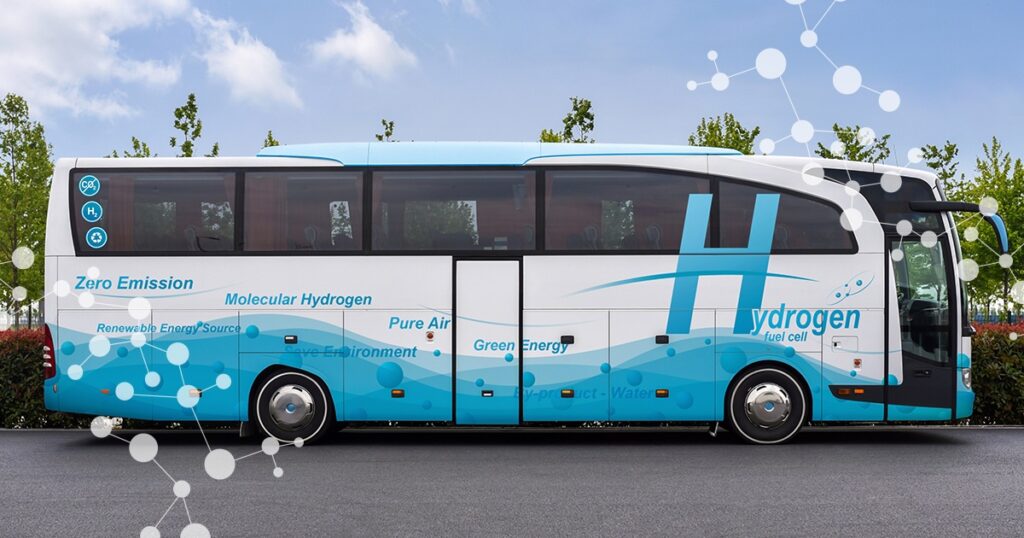Canada is expected to start two new hydrogen bus pilots, with one pilot taking place in the Albertan city of Edmonton and another in Strathcona County. While the hydrogen public transportation buses look and feel like typical city buses, they use fuel cells that utilize oxygen and hydrogen to generate power rather than requiring gasoline to run.
According to city manager Andre Corbould, the hydrogen bus pilot in Edmonton is part of the city’s desire to be emissions-neutral by 2050. The hydrogen bus pilot will be judged based on how it can handle Alberta’s extreme temperatures and the type of range the vehicle has.
The hydrogen bus pilot is meant to help grow Alberta’s hydrogen sector and support Edmonton’s population, jobs, and opportunities. In addition to being a leader in natural gas production in Canada, the province of Alberta produced an estimated 2.5 million tons of hydrogen in 2021, according to the Alberta Energy Regulator, with production expected to increase to over 3.5 million tons by 2031. Currently, most of Alberta’s hydrogen is used for industrial settings but could apply to broader markets, such as heating and power generation.
Both buses in the new pilot programs will use hydrogen generated in Alberta’s Industrial Heartland. The hydrogen bus pilot in Edmonton will run for one year before a decision is made about whether to make it permanent.
These new hydrogen buses in Canada follow a similar development in Los Angeles County from late last year. In December 2022, the first hydrogen-powered public bus in Los Angeles County went into service, signifying a historic milestone that will increase the popularity of zero-emission buses. These buses don’t connect to the power grid and can run longer without refueling than battery electric buses.
According to Roland Cordero, director of maintenance and diesel technology for Foothill Transit, hydrogen buses can travel 300 miles without stopping for refueling, while battery electric buses need to recharge after just 150 miles. Moreover, hydrogen fuel-cell buses take between seven to 10 minutes to refuel, compared to a battery-electric bus needing two to four hours to charge.
One hydrogen bus in the new Foothill Transit fleet will eliminate 3,655 grams of carbon dioxide emissions per mile compared to a Compressed Natural Gas bus, which is a cleaner fuel than diesel but still produces greenhouse gases.
Foothill Transit now has three new hydrogen fuel-cell electric buses in Pomona, Claremont, and La Verne. By February 2023, the bus agency is expected to start running its full order of 33 fuel cell buses, the largest hydrogen bus fleet in North America. Foothill Transit is the first agency to deploy zero-emissions hydrogen buses in Los Angeles County.
Hydrogen infrastructure is still growing in North America, but Foothill Transit has added a 25,000-gallon hydrogen fuel tank and refueling system to its Pamona facility so buses can easily refill.
OneH2 sees the development of these hydrogen buses in Canada and Los Angeles County as a massive opportunity for fuel cell technology to prove its viability in bulk applications, both performance and economically. Running buses on hydrogen fuel reduces carbon emissions and eliminates air pollutants that create smog in cities. Hydrogen buses also utilize more sustainable source materials than battery electric buses by negating the need for lithium-ion batteries.
We are excited about these pilot projects in Edmonton and Los Angeles and hope they will pave the way for more hydrogen-powered buses in North America, ultimately helping us achieve a cleaner, sustainable future. Hydrogen fuel cell buses are a crucial step towards zero-emission public transportation, which is important for both the environment and public health.
Sources:
